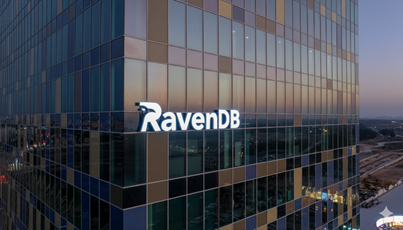We are a database company, and many of our customers and users are running in the cloud. Fairly often, we field questions about the recommended deployment pattern for RavenDB.
Given the… rich landscape of DevOps options, RavenDB supports all sorts of deployment models:
- Embedded in your application
- Physical hardware (from a Raspberry Pi to massive servers)
- Virtual machines in the cloud
- Docker
- AWS / Azure marketplaces
- Kubernetes
- Ansible
- Terraform
As well as some pretty fancy permutations of the above in every shape and form.
With so many choices, the question is: what do you recommend? In particular, we were recently asked about deployment to a “naked machine” in the cloud versus using Kubernetes. The core requirements are to ensure high performance and high availability.
Our short answer is almost always: Best to go with direct VMs and skip Kubernetes for RavenDB.
While Kubernetes has revolutionized the deployment of stateless microservices, deploying stateful applications, particularly databases, on K8s introduces significant complexities that often outweigh the benefits, especially when performance and operational simplicity are paramount.
A great quote in the DevOps world is “cattle, not pets”, in reference to how you should manage your servers. That works great if you are dealing with stateless services. But when it comes to data management, your databases are cherished pets, and you should treat them as such.
The Operational Complexity of Kubernetes for Stateful Systems
Using an orchestration layer like Kubernetes complicates the operational management of persistent state. While K8s provides tools for stateful workloads, they require a deep understanding of storage classes, Persistent Volumes (PVs), and Persistent Volume Claims (PVCs).
Consider a common, simple maintenance task: Changing a VM's disk type or size.
As a VM, this is typically a very easy operation and can be done with no downtime.The process is straightforward, well-documented, and often takes minutes.
For K8s, this becomes a significantly more complex task. You have to go deep into Kubernetes storage primitives to figure out how to properly migrate the data to a new disk specification.
There is an allowVolumeExpansion: true option that should make it work, but the details matter, and for databases, that is usually something DBAs are really careful about.
Databases tend to care about their disk. So what happens if we don’t want to just change the size of the disk, but also its type? Such as moving from Standard to Premium. Doing that using VMs is as simple as changing the size. You may need to detach, change, and reattach the disk, but that is a well-trodden path.
In Kubernetes, you need to run a migration, delete the StatefulSets, make the configuration change, and reapply (crossing your fingers and hoping everything works).
Database nodes are not homogeneous
Databases running in a cluster configuration often require granular control over node upgrades and maintenance. I may want to designate a node as “this one is doing backups”, so it needs a bigger disk. Easy to do if each node is a dedicated VM, but much harder in practice inside K8s.
A recent example we ran into is controlling the upgrade process of a cluster. As any database administrator can tell you, upgrades are something you approach cautiously. RavenDB has great support for running cross-version clusters.
In other words, take a node in your cluster, upgrade that to an updated version (including across major versions!), and it will just work. That allows you to dip your toes into the waters with a single node, instead of doing a hard switch to the new version.
In a VM environment: Upgrading a single node in a RavenDB cluster is a simple, controlled process. You stop the database on the VM, perform the upgrade (often just replacing binaries), start the database, and allow the cluster to heal and synchronize. This allows you to manage the cluster's rolling upgrades with precision.
In K8s: Performing a targeted upgrade on just one node of the cluster is hard. The K8s deployment model (StatefulSets) is designed to manage homogeneous replicas. While you can use features like "on delete" update strategy, blue/green deployments, or canary releases, they add layers of abstraction and complexity that are necessary for stateless services but actively harmful for stateful systems.
Summary
For mission-critical database infrastructure where high performance, high availability, and operational simplicity are non-negotiable, the added layer of abstraction introduced by Kubernetes for managing persistence often introduces more friction than value.
While Kubernetes is an excellent platform for stateless services, we strongly recommend deploying RavenDB directly on dedicated Virtual Machines. This provides a cleaner operational surface, simpler maintenance procedures, and more direct control over the underlying resources—all critical factors for a stateful, high-performance database cluster.
Remember, your database nodes are cherished pets, don’t make them sleep in the barn with the cattle.







